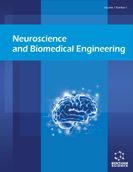Abstract
Background: Alzheimer’s disease (AD) is the most seen cause of dementia. Biomarker tests will be essential to improve the early diagnosis of AD, as treatment is more effective in the early stage. The biomarkers of AD are divided into two main classes: amyloid β-peptide (Aβ) accumulation, and tau-related neuronal degeneration. Peripheral blood represents an alternative sample for reflecting pathological events occurring in the body. Blood samples are a possible alternative for cerebrovascular fluid samples. The potential advantages of blood biomarkers are obvious: less invasive; simple to perform, convenient to use, and not harmful to the patient.
Methods: Review publications about peripheral blood amyloid and tau biomarker tests by ELISA for AD stages; analyze and interpret data in comparison with cerebrovascular fluid results. Also review publications about peripheral messenger RNA biomarkers tests for AD diagnosis; analyze feasibility of diagnostic tests using blood messenger RNA biomarkers for AD.
Results: With sensitive and specific ELISA, extensive studies of plasma Aβ42 level and Aβ42/Aβ40 ratio were reported during the development of blood-based protein biomarkers. High level of plasma Aβ42 increased risk of AD or cognitive decline. The majority of the studies also indicated that increased plasma Aβ42 level was present prior to or at the start of the development of AD, and Aβ42 level decreased as disease progressed; the lowest Aβ42/Aβ40 ratio reported was associated with developing dementia. However, some studies showed inconsistent results. Reliable methods to determine levels of tau and phosphorylated tau in blood of AD patients are still being explored.
Conclusion: The effort to discover and develop diagnostic protein biomarkers in blood has not led to feasible candidate markers close to CSF. It may be helpful for each laboratory to set its own normal value or cut-offs due to different ELISA kits used. Improving clinical diagnostic criteria may be another valuable option. Development of additional biomarkers may also increase diagnostic accuracy. Compared with other technologies used in routine diagnostic tests, real time reverse transcription polymerase chain reaction (RT-qPCR) is sensitive, specific, scalable, and cost-effective. There is relatively less evidence of blood mRNAs acting as biomarkers in AD. The scientific merit and feasibility of diagnostic tests for monitoring AD progress using blood mRNAs biomarker quantification need to be established.
Keywords: Alzheimer’s disease, amyloid β-peptide, biomarker, blood, ELISA, RT-qPCR, tau.
Graphical Abstract
 35
35

